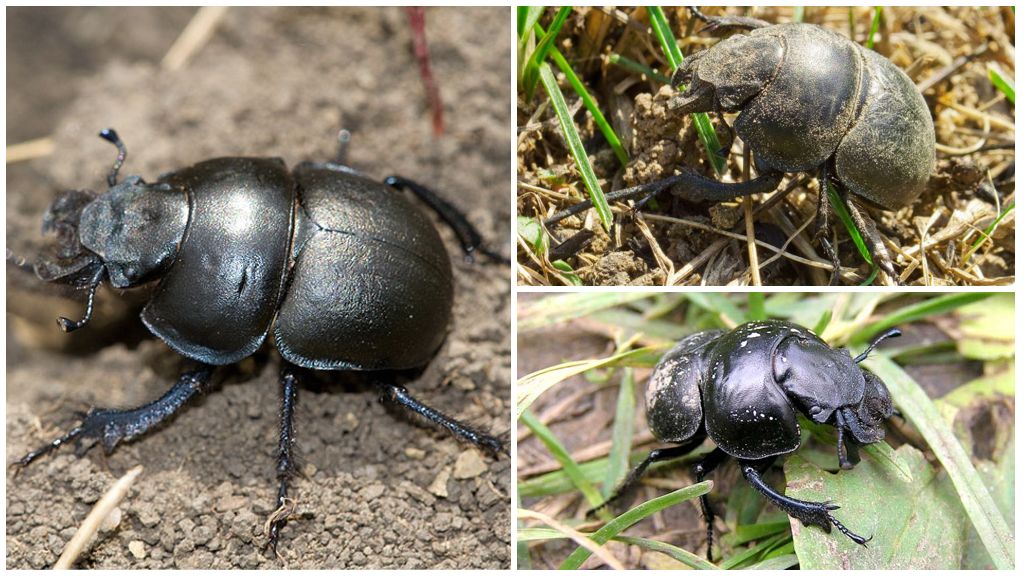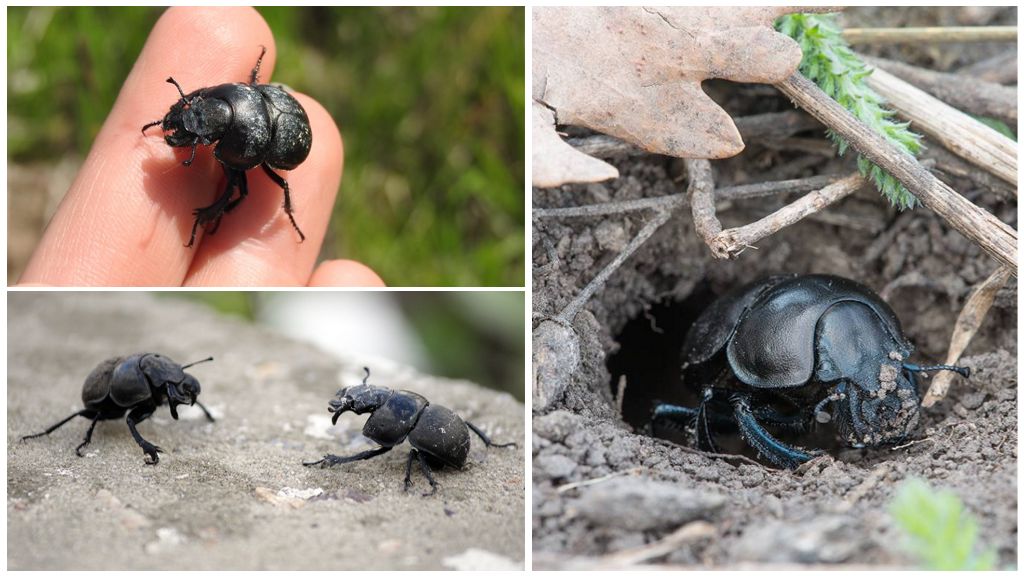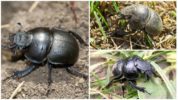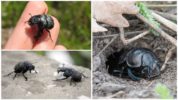- Strigun beetle
- Strigun beetle
The strigun beetle (lat. Lethrus apterus) has many names - Kravchik, virgin lands, golovach, strigunets. Belongs to the family of dung dugouts, is agricultural pest. Distributed around the world in the steppes, forest-steppes. Settles on untouched plains, ravines, forest edges, as well as in gardens, fields, plowed lands. The fight against the strig beetle is a real creativity, since the usual method of bullying does not bring the desired result.
What do craziers look like?
Body size varies from 2 to 3.5 cm. Males are larger than females. A characteristic feature is a large head with large jaws. Male individuals have additional fangs. Their males are used in the battle with the enemy, a competitor during the mating season.
Big head smoothly passes into the chest. The abdomen is convex, accounting for 1/3 of the whole body. Wings are absent, string beetles live underground, crawl on the surface. The body is covered with a strong chitinous cover. The color is jet black or with a blue tint. Legs are short, strong, ending with claws. Photo imago presented below.
On a note!
Larvae are large, thick caterpillars of off-white color with a dark head. The body size reaches 4 cm. They live underground, pupate at the end of the development cycle. In this state they hibernate. Transformation occurs in the spring, approximately in May.
Lifestyle, nutrition
Kravchik beetle in Ukrainian means tailor. The insect cuts off the plant with powerful jaws, just like a hairdresser cuts hair. It cuts leaves, cuttings, shoots, inflorescences, flowers, even a young vine on its way.
Unlike their relatives of dung beetles, the strigun beetle eats not grass excrement, but grass. Cutting everything in its path - seedlings, garden crops, shrubs, vineyards, decorative flowers. During the day, the pest is able to destroy 10 shoots of the vine.
Interesting!
The strigun drags the green insect into the hole, it is compacted there. Under the influence of bacteria, stocks begin to decay, turn into silo. This is the main feed of adult beetles, their larvae.

Breeding
The young generation of males, females appears in May, the mating period begins. After fertilization, the female proceeds to the construction of the hole. Tears out labyrinths underground at a depth of up to 50 cm, depending on soil hardness, moisture.
In a separate cell, 8-10 eggs are laid, sometimes 20. Embryos develop within about a week. During this time, parents actively procure feed. Cut off all the greens available near the hole, stuff it into the hole, and compact it densely.
Large larvae with a body length of up to 7 mm are characterized by a good appetite. For about 20 days, adult strig beetles replenish food supplies. After 3 weeks, the caterpillars pupate. In this state they winter, continue the development cycle in early spring. They turn into an adult, get out.
On a note!
Stringers die with the onset of cold weather, but the younger generation will emerge from the pupae in the spring. To prevent this process, you need to plow the land twice - in the fall, in the spring. Minks are destroyed, pupae freeze with the arrival of the first frosts.
What is dangerous kravchik
In the wild, the presence of a beetle is almost not felt.Lives in the ground, cuts grass, helps to loosen the soil. But the black beetle in the garden turns into a real agricultural pest. The insect prefers solid soil, untouched land, but often approaches human possessions in search of a more “tasty” food.
Important!
Absolutely all cultures in the garden, flower beds, and the garden can suffer from the life of bugs. With powerful jaws, pests calmly cut young shoots, stems, leaves, flowers. A dozen adults in a season can destroy a young vineyard, a bed of strawberries, and strawberries.

It is difficult to fight a beetle with a beetle, because most of the time they spend in deep mazes, they are active at night. We'll have to be patient, show ingenuity.
Methods of struggle
You can get rid of black bugs in the garden by applying several methods of struggle at once. It is impossible to poison pests with insecticides per day, as is the case with other insects. The effectiveness of this method is 50%. Additionally, agricultural, mechanical, folk methods are used.
How to poison black beetles
Experts recommend the use of contact-intestinal insecticides. Often use karate. They cultivate the soil at the entrance to the hole or arrange bait. In the immediate vicinity of the pest's house, they dig a hole, cut greenery, soaked in a solution of an insecticidal substance, is laid there.
According to the observations of gardeners, gardeners, chemistry will work much more efficiently if applied during the flowering period of apple trees. This time period coincides with the mating season of the stringers. Adults are on the surface of the soil, in contact with the ground, greenery. Carry out the treatment of any contact-intestinal insecticides.
- Arrivo
- Karate;
- Diazinon;
- Decis.
You can buy the drug in a specialized store, household departments of supermarkets, retail outlets in the market.
Folk methods
Application depends on personal preferences of gardeners, the number of beetles on the site.
- Water. Pour at least 10 liters of boiled water into one mink. Adult individuals can survive, but the likelihood of killing eggs and larvae increases.
- Vegetable oil. The method is more efficient. Any vegetable oil, usually sunflower, is added to the water. Pour into the hole. Oil envelops the body of the beetle, clogs the spiracles. Strigun dies, even if he gets out. The procedure is carried out in the evening or early in the morning when the beetles are in the hole. 2 ml of water takes 100 ml of oil.
You can avoid re-infection of the garden in the spring by deep digging or plowing the soil. The pest population dies at the developmental stage - larvae, pupae.





